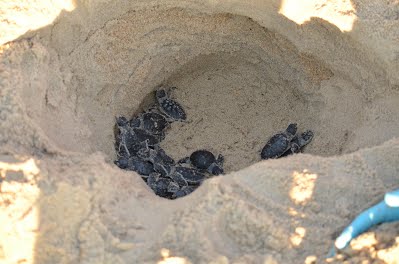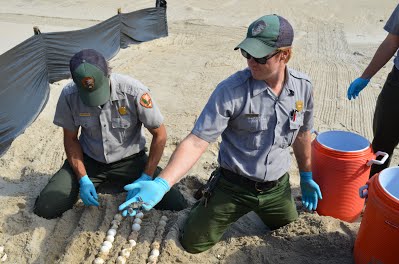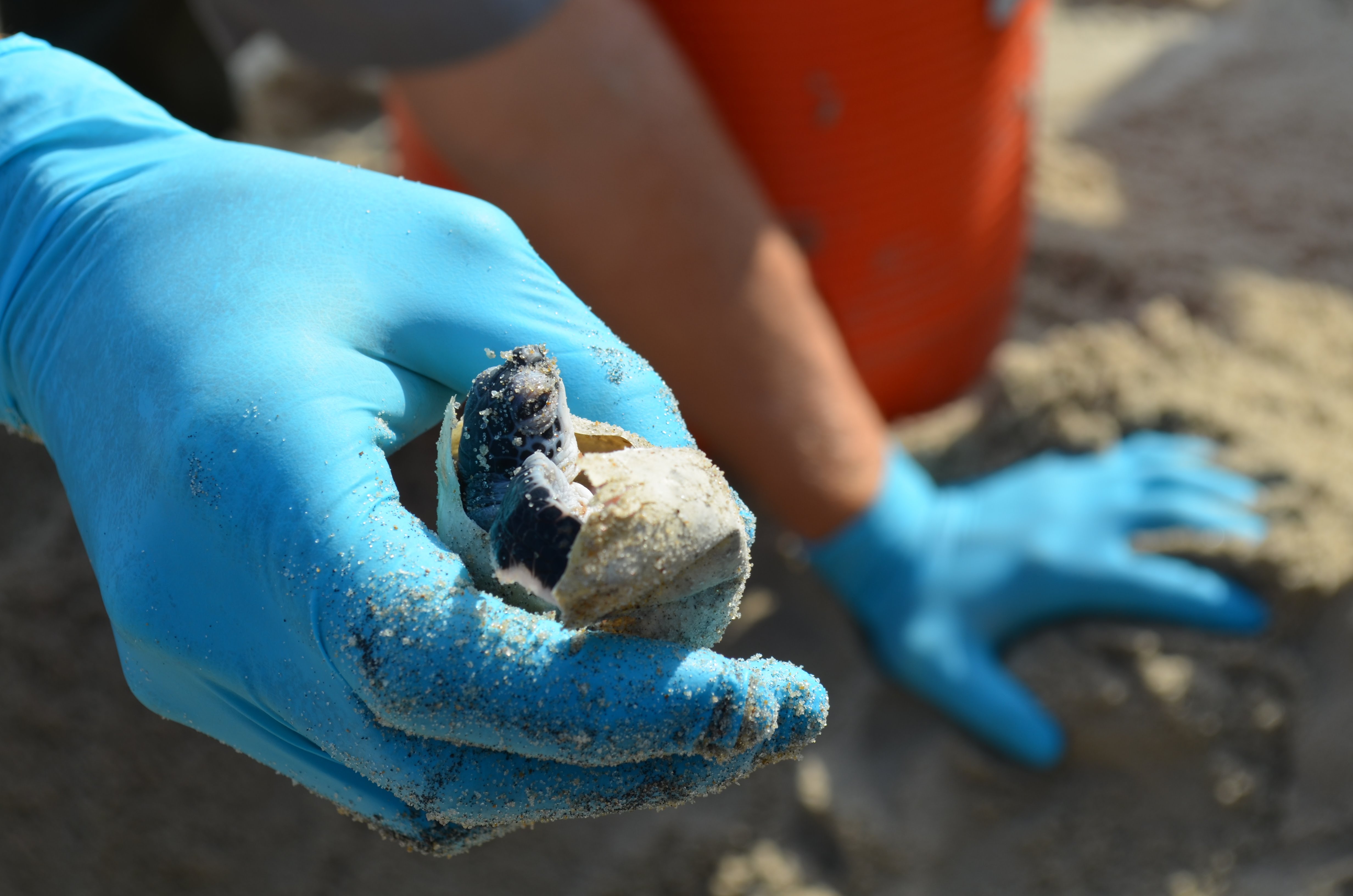The nest site sat through Tropical Storm Hermine and Hurricane Matthew and thanks to its good placement on the beach it was only over-washed one time. Throughout its incubation period, good weather and warm temperatures persisted up until roughly day 55 of incubation. After that day there were some cooler days and some warm days, but generally when the temperatures start to drop the chances of a normal hatching goes down greatly. On October 24, 2016, day 63 of incubation, a depression (uniform dimple over top of the nest site) formed, giving staff 100% confirmation that some of the 172 eggs were in fact viable. Against all odds the nest started to hatch on October 26, 2016, day 65 of incubation. The hatch event observed is known as a trickle, this is when the a nest only hatches out a few sea turtles at time, unlike a "boil," when they all hatch at once. For the next 7 days, staff confirmed 29 hatchlings had emerged and made it the ocean on their own by observing the hatchling tracks they left behind before the start of their new journey towards the Gulf Stream.
On November 3, 2016, RM staff worked to fully excavate the nest site since it had been eight full days since the first hatch event. Staff often only wait 5 days to excavate nests that exhibit a trickle style of hatching, but since it endured some cooler weather and two storm events, a decision was made to wait a bit longer to see how many would emerge naturally. Upon digging the nest site up we discovered a total of 113 unhatched eggs (88 undeveloped embryos, 4 early stage embryos, 2 mid stage embryos, 13 late stage embryos, 5 dead pipped, and 1 predated egg by ghost crab), 59 eggshells, and 26 live hatchlings that were released that evening. With this information we determined that 33 hatchlings made it the ocean on their own and a total of 59 hatchlings hatched from the 172 eggs that were relocated. The following success rates were calculated from our findings: 34.3% hatching rate (% of hatchlings to emerge from their eggs) and 19.1% emergence rate (% of hatchlings to emerge from the nest site).



It was absolutely phenomenal to see that some of these eggs were able to persevere against all of the odds stacked up against them. Due to the nests success we now know that the females genetics remain in the system, and hopefully one day, one of these hatchlings will make it back to our beaches to complete the cycle its mother never had the chance to do.
Submitted by:
William Thompson
Lead Biological Science Technician
Hatteras District
